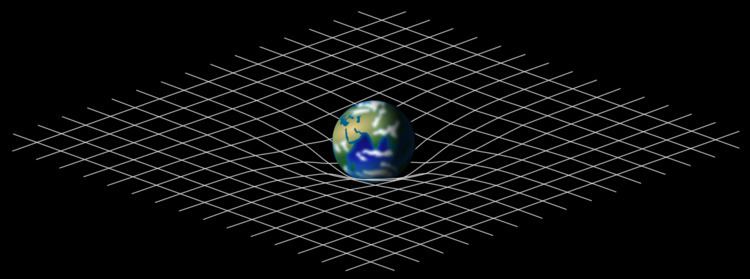 | ||
Lemaître coordinates are a particular set of coordinates for the Schwarzschild metric – a spherically symmetric solution to the Einstein field equations in a vacuum – obtained by Monsignor Georges Lemaître in 1932. Changing from Schwarzschild to Lemaître coordinates removes the coordinate singularity at the Schwarzschild radius.
The Lemaître coordinates
The original Schwarzschild coordinate expression of the Schwarzschild metric, in natural units (c = G = 1), is given as
where
This metric has a coordinate singularity at the gravitational radius
Georges Lemaître was the first to show that this is not a real physical singularity but simply a manifestation of the fact that the static Schwarzschild coordinates cannot be realized with material bodies inside the gravitational radius. Indeed, inside the gravitational radius everything falls towards the centre and it is impossible for a physical body to keep a constant radius.
A transformation of the Schwarzschild coordinate system from
(notice that the numerator and denominator are switched inside the square-roots), leads to the Lemaître coordinate expression of the metric,
where
The trajectories with ρ constant are timelike geodesics with τ the proper time along these geodesics. They represent the motion of freely falling particles which start out with zero velocity at infinity. At any point their speed is just equal to the escape velocity from that point.
In Lemaître coordinates there is no singularity at the gravitational radius, which instead corresponds to the point
The Lemaître coordinate system is synchronous, that is, the global time coordinate of the metric defines the proper time of co-moving observers. The radially falling bodies reach the gravitational radius and the centre within finite proper time.
Along the trajectory of a radial light ray,
therefore no signal can escape from inside the Schwarzschild radius, where always
